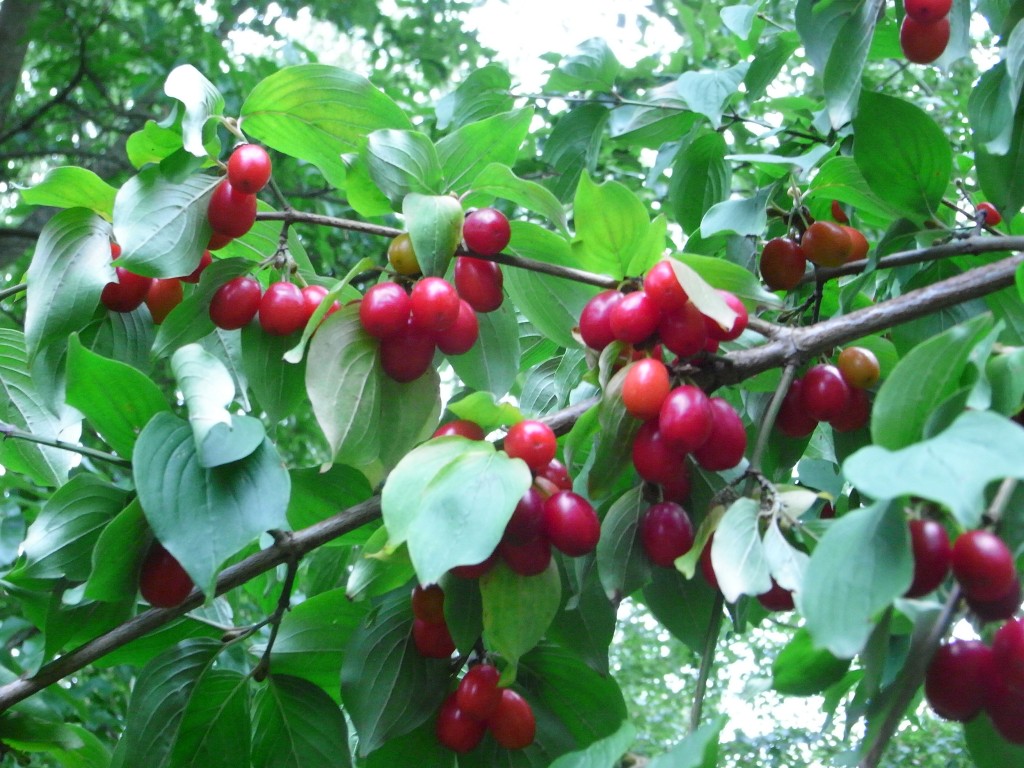
Although associated with leaf lesions, proof of pathogenicity of the causal fungus has not been established for many tree genera. Cylindrosporium is a fungus genus that has been associated with leaf spots on many woody plants, including Shepherdia, Salix, Ulmus, Alnus, Corylus, Robinia, Rhus, Juglans, Morus, Ostrya, Prunus, Betula, Castanea, Fraxinus, Acer, Celtis, Carpinus, and Quercus (10). Diseases that do not substantially reduce the photosynthetic area of the leaf are primarily of aesthetic importance. Diseases that defoliate trees in midsummer and permit refoliation late in the growing season are especially harmful to tree health because stored carbohydrates are used in- appropriately. Leaf spot diseases on trees vary from those that are merely displeasing to those capable of killing trees, usually after two or more consecutive years of premature defoliation. quercus dans I'lllinois et le premier traitantdu Cylindrosporium sur le Q. Ce rapport d'etude est le premier traitant de C. Les symptdmes typiques furent produits sur seulement 1 des 56 semis de ch§nes inocules. La croissance du champignon dans la culture fut meilleure a 27 degrees C la germination de conidies fut meilleure entre 24 et 27 degrees C. Un champignon, le Cylindrosporium, etait toujours associe et isole des taches de feuille sur le Quercus rubra II fut examine dans des cultures et sur des feuilles par la microscopie a la lumiere et electronique et identifie comme de C. quercus in Illinois and the first of a Cylin- drosporlum on Q. Typical symptoms were produced on only 1 of 56 inoculated oak seedlings. Growth of the fungus in culture was best at 27☌ ger- mination of conidia was best at 24-27☌. It was examined in pure culture and on leaves by light and electron microscopy and identified as C. In broth dilution method both extracts achieved 100% inhibition.Ī Cylindrosporlum fungus was consistently associated with and isolated from circular leaf spots on Quer- cus rubra. The Dacryopinax spathularia extract shows higher MIC (Minimum inhibitory concentration) 4 microgram/ml against S.typhi, whereas S.commune extract shows higher MIC 16 microgram/ml against P. spathularia extract shows higher ZOI of 7mm against S.aureus at 1000 microgram concentration. The Schizophyllum commune extract show higher ZOI (Zone of inhibition) of 9 mm at 1000 microgm concentration against P.mirabilis, whereas D.

The Mycochemical constituents of both the macrofungal extracts include compounds with antibacterial properties like Phenols, Alkaloids, Saponins, Tannins, Flavonoids etc. Pseudomonas aeruginosa (MTCC 7837), Staphylococcus aureus (MTCC 3160), Proteus mirabilis (MTCC1429), Bacillus subtilis (MTCC736) and Salmonella typhi (MTCC3216) which are known to cause several diseases and infections like typhoid, urinary tract infection, pulmonary tract infection, pneumonia, staphylococcal scalded skin syndrome (SSSS). In the present study the two edible macrofungi Dacryopinax spathularia and Schizophyllum commune were subjected to ethanolic extraction and the inhibitory impact of the extracts was tested by Agar diffusion method and Broth dilution method against five human pathogenic bacteria, Viz. robustus, existing only in endangered or rare habitats. Two species are put in the Preliminary Red List of the Macromycetes in the Republic of Macedonia - Phellnus rimosus, belongs to the category of particularly rare or rare species and Ph.

oxicedrus, Ligustrum vulgare, Morus sp., Ostrya, Paliurus, Picea, Pinus spp., Platanus orientalis, Populus spp., Prunus spp., Punica granatum, Pyrus sp., Quercus spp., Robinia pseudoacacia, Salix spp., Ulmus sp.

The majority of the registered species were collected in different associations: beech, oak, fir, pine, mixed forests, Juglando-Platanetum orientalis, Robinia plantings, in meadows and substrates are different deciduous and coniferous trees: Abies, Alnus, Betula, Carpinus, Castanea sativa, Corylus avellana, Ephedra major, Evonymus verrucosa, Fagus, Fraxinus ornus, Juniperus excelsa, J. Of the 34 total species of this genus in Europe, with the research in the Republic of Macedonia to date, the following 15 species have been recorded: Phellinus conchatus, Ph. The previously published data are also included so as to have the complete list of this group of fungi, while most of the unpublished data comes from the year 2000 until now. This is the first paper of systematic research looking into Phellinus genus in the Republic of Macedonia.


 0 kommentar(er)
0 kommentar(er)
